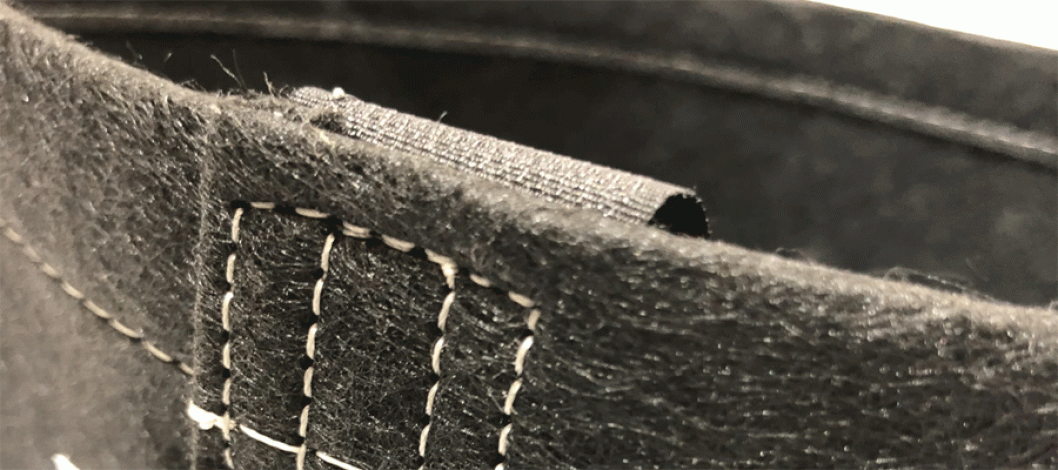
Geotextile fabrics are synthetic, permeable textiles used to improve soil conditions and enhance the performance of various civil engineering and construction projects. They are versatile materials that can separate, filter, reinforce, protect, and drain soil, making them crucial for applications like roads, railways, landfills, and coastal protection.
Geotextiles are permeable fabrics consisting mainly of materials such as polypropylene and polyester. Depending on their manufacturing method, they may be woven or non-woven, based on the type of application they are intended for. Woven and non-woven fabrics have different production methods. While non-woven geotextile fabrics comprise fibres, filaments, or other elements that are joined together randomly, in the case of woven fabrics, these yarns, fibres, or filaments are intertwined. In this new post, we will focus on the features of applications of woven geotextile fabrics.
Woven geotextile fabrics are defined as any material manufactured by intertwining two or more yarns, fibres, filaments, strips, or other elements, usually at right angles, i.e., both lengthwise and crosswise, by means of a textile process. These fabrics are mainly applied in the construction sector. This is therefore the simplest type of fabric manufacturing, also known as the “simple pattern” method, which results in a flat structure.
Here's a more detailed look at their features and functions:
Key Features:
Permeability: Geotextiles allow water to pass through while retaining soil particles, facilitating drainage and preventing soil erosion.
Strength and Durability: They are made from strong synthetic fibers like polypropylene or polyester, providing high tensile strength and resistance to degradation. When it comes to choosing the right geotextile fabric for a project, there are 7 essential qualities you should look out for. These include strength, thermal stability, UV resistance, puncture resistance, soil adhesion, water exposure capability, and permeability. If any of the geotextile fabric manufacturers possess this said feature, you are buying the right products
Resistance to Environmental Factors: Geotextiles can be affected by various environmental factors, including UV radiation, temperature extremes, chemical exposure, and biological activity. These factors can lead to degradation of the geotextile material, affecting its strength, durability, and functionality.
Versatility: They can be used in a wide range of applications, from road construction and erosion control to landscaping and shoreline protection. Geotextiles are versatile materials used in a wide range of applications due to their ability to perform multiple functions such as separation, filtration, reinforcement, and drainage. They are used in construction, agriculture, erosion control, and environmental protection, making them indispensable in various projects.
Functions:
Separation: Geotextiles prevent different soil layers from mixing, preserving the integrity of the soil structure.
Filtration: They act as filters, allowing water to pass while retaining soil particles, preventing clogging of drainage systems.
Reinforcement: Geotextiles add strength to soil structures, enhancing the stability of slopes, embankments, and retaining walls.
Drainage: They facilitate water movement, preventing waterlogging and improving soil drainage.
Erosion Control: By stabilizing soil and preventing soil movement, geotextiles play a vital role in erosion control.
Types of Geotextiles: Geotextiles are permeable fabrics used in civil engineering and construction. They are broadly classified into woven, non-woven, and knitted types, each with unique properties and applications. Woven geotextiles are strong and are used for separation and reinforcement, while non-woven geotextiles excel in filtration and drainage. Knitted geotextiles offer a combination of drainage and reinforcement capabilities.
Applications:
A geotextile is a synthetic permeable textile material used with soil, rock, or any other geotechnical engineering-related material. Geo textiles, also called geosynthetics, are generally associated with high-standard all-season roads, but can be used in low-standard logging roads. A geotextile is designed to be permeable to allow the flow of fluids through it or in it, and a geomembrane is designed to restrict the fluid flow.
Road and Railway Construction: Geotextiles are used to stabilize roadbeds, improve drainage, and prevent soil erosion.
Landscaping: They are used for erosion control, soil stabilization, and the separation of different layers in landscaping projects.
Erosion Control: Geotextiles are widely used in erosion control applications such as on slopes, embankments, and shorelines.
Landfill Construction: They are used to create liners and drainage layers in landfills, preventing leachate contamination.
Coastal Protection: Geotextiles are used in shoreline protection structures to prevent erosion and stabilize shorelines.
Geotextiles are crucial in various engineering and construction projects due to their ability to enhance soil stability, prevent erosion, and improve drainage. These synthetic fabrics act as separators, filters, and reinforcements, contributing to the longevity and performance of structures. Their versatility makes them essential for applications ranging from road construction to erosion control and coastal protection.
- SZK, based on online information
Comment Now